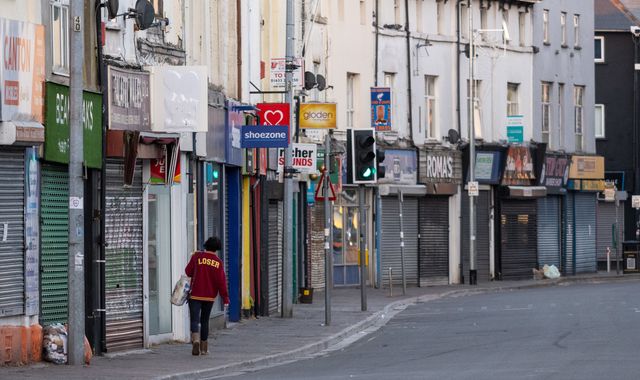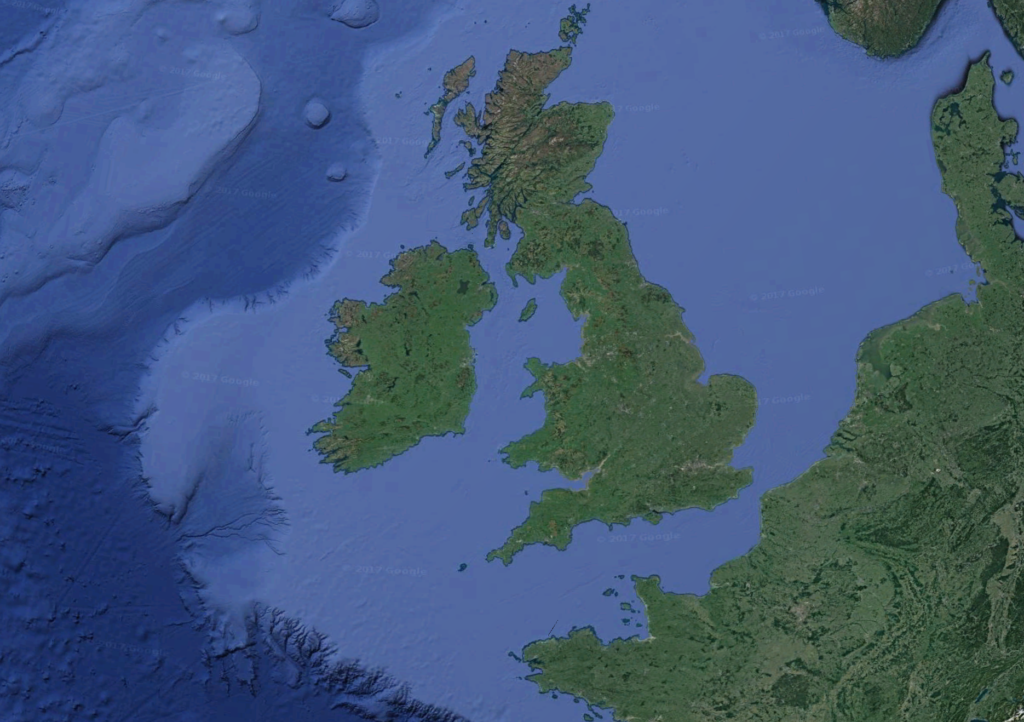Coronavirus: Coastal and ex-industrial towns most economically at risk
Written by News on 23/04/2020
Coastal and ex-industrial towns are most economically at risk from the COVID-19 pandemic, according to new research.


Sky News analysis of the data for England and Wales shows that although some high risk towns also suffer already high levels of social and economic deprivation, there is no clear correlation between deprived towns and towns hard hit by lockdown.
The research conducted by the Centre For Towns and the University of Southampton, and seen exclusively by Sky News, also indicates that Wales is the region of the UK worst affected, while the South East is faring best.
Which towns are most at risk?
Half of the coastal towns are among the top 10% most at risk, and a third of ex-industrial towns.
The top five most at risk towns are coastal towns: Mablethorpe, Skegness, Clacton-on-Sea, Bridlington and Kinmel Bay.
And of the top 20 most at risk towns in the UK, nine were coastal and ten were ex-industrial with only one, Peterlee in the North East, not listed as either.
By contrast commuter towns are found to be economically safe places, with a huge 65% of them in the least at risk section.
This is perhaps not wholly surprising as coastal towns already have comparatively higher levels of unemployment and are less likely to have diverse economies, relying heavily on sole markets, for example tourism.
How has the risk ranking been calculated?
The risk ranking has been produced by calculating the proportion of a town’s population employed in industries that are temporarily shut down.
This includes the non-food or pharmacy retail sector, the accommodation industry, the arts and sports sector, hospitality, travel and tourism, public transport, childcare and the “self care” industry which includes things like hairdressers and launderettes.
This has then been cross referenced with other indices of deprivation including social wellbeing, economic wellbeing, isolation (how well linked a town is) and the proportion of the population that are elderly and dependent.
Which regions are worst affected?
The data shows that Wales is the region at most overall risk from the pandemic.
In fact 43% of towns in Wales are in the worst affected tenth of towns overall. In contrast, just 3% of the towns in the South East are in this group.
The graph above breaks up the regions by decile (one of ten equal parts that a set of things is divided into, when you are comparing a particular feature relating to them) from the most to the least at risk. The colours represent how prevalent towns in that region were in each decile. Darker colours to the left show that lots of towns were at very high risk, lighter colours to the left show that the region featured less in the high risk decile.
Much of this is a result of towns’ pre-existing deprivation. The indices used in this study have been calculated by taking into account a range of factors including the percentage of a population with bad health, the percentage of households in fuel poverty, distance to the nearest core city, net annual income, unemployment and how the fortunates of a town have changed over the preceding decades.
The economic pain of the COVID-19 shut down, of course, compounds these existing problems.
:: Listen to the Daily podcast on Apple Podcasts, Google Podcasts, Spotify, Spreaker
Worsbrough in the region of Yorkshire and the Humber, for example, is the tenth most at risk town overall, largely because it has the fourth worst social wellbeing and the sixth worst economic wellbeing.
Others such as Walton-on-the-Naze have extremely high proportions of elderly dependent residents and thus fewer workers to help the post crisis recovery.
Where is the lockdown hitting hardest?
While this gives some indication of how hard it might be for a town to bounce back when restrictions are lifted, it’s also interesting to examine which towns have been worst hit in the immediacy by the economic impact of lockdown.
In other words, which towns are seeing the largest portion of the local economies ground to a halt.
This “industrial sector lockdown risk” has been calculated based on which towns have the highest proportions of workers in industries that have shut down such as retail, hospitality and arts.
Nearly four in 10 towns in the South West are in the worst affected group in the country, as are three in 10 Welsh towns.
Many of the 20 worst hit are in Cornwall and Devon such as Penzance, St Blazey, St Ives and Wells. The region is likely being badly affected by the lockdown because so much of the local economy is based on tourism and leisure.
Small towns are, on the whole, being the worst affected. In fact, only six of the 50 worst affected towns were larger and even then they were only listed as “medium” towns.
It’s perhaps no coincidence that the South West has one of the highest proportions of small towns of any region nationally.
The research counts just 10 “core cities”. Of these Liverpool was found to be most affected by the shut down with Sheffield close behind it.
The data also reveals towns in the UK that have the highest reliance on various sectors of the economy.
Whickham in the North East for example has the highest percentage of its population employed in retail – 38%, while tourist towns such as Ilkley, Whitby and Swanage were most heavily reliant on the hospitality industry. They are all being badly hit by the uncertainty of lockdown.
How easy will it be for towns to recover?
Recovery will depend not just on sections of the economy opening up again, but also on other factors which will guide how quickly a town can bounce back.
Not all towns that struggle with already high levels of deprivation have local economies that are particularly vulnerable to the coronavirus shut down.
This could be seen as fortunate as towns which have both are likely to struggle the most to recover after this crisis is over.
While there are cases of towns like this, Skegness, for example, which is the second most at risk town and Tredegar in Wales which comes sixth, there is little direct correlation between the two phenomena.
But sadly for towns across the country, the economic pain is likely to be deep and lasting.
(c) Sky News 2020: Coronavirus: Coastal and ex-industrial towns most economically at risk







